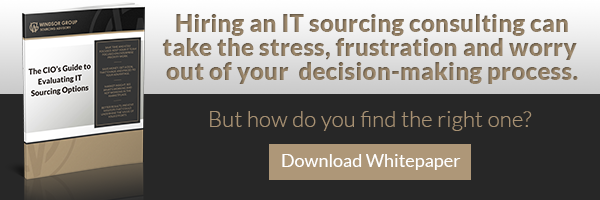
The large majority of modern enterprises have begun to pursue agile transformation in an effort to better support today’s digital business demands. However, achieving agile is not as simple as implementing a new application into your infrastructure; it requires a shift in thinking that involves the insight and support of C-level executives as well as the business and development teams. Agile, when executed well, can create greater levels of enterprise flexibility and agility, increase engagement and collaboration between teams, shorten time to market, increase customer satisfaction, and reduce development costs. However, when executed poorly, agile can cause more problems than it can solve, which is why it is so important for CIOs and key leadership team members to be aware of potential obstacles and challenges, as well as establish a game plan for how agile will be achieved.
How to Achieve Data Center Agility
The benefits are obvious, but implementing agile is a much more time intensive and complex process than one may realize. In fact, most organizations that pursue agile spend years, not months, executing such transformations. The reason for this is agile adoption requires an extensive amount of change management due to the impact it can have on an enterprise’s organizational structure, tools, processes, and even its cultural behavior.
It may come as no surprise, but the IT department of any organization plays a critical role in an organization’s ability to achieve enterprise agility. It’s possible for organizations to establish agile practice within individual teams or departments, but unless that practice is transcended to the entire organization, true enterprise agility cannot be achieved. The recent developments that have surfaced in IT, such as hyperconvergence, has made agile much more attainable due to its ability to reduce time to market and increase capacity; ultimately allowing IT to better support the agile initiatives of other departments.
Although a major undertaking, there are three simple things that CIOs, and leadership teams alike, can do to ensure a successful data center agile transformation; educate executives, conduct rigorous operational analysis, prepare your organization.
- Educate executives
In order to truly achieve enterprise agility, it is imperative to have the alignment and support of all key strategic decision-makers and stakeholders. As discussed, agile can take years before its benefits are fully realized, which means that the decision to pursue agile must be in the best interest of your enterprise as a whole, and not just a single department.
In addition, justifying its benefits to key decision-makers and stakeholders can often be a challenge due to the inability to gage the immediate benefits of agile. Greater operational flexibility and agility is one thing that can be quickly realized, but cost benefits and ROI aren’t; which can sometimes cause corporate leadership to get impatient and concerned that their investment is not paying off.
In today’s IT landscape, you’d be hard-pressed to find IT or operations executives who are not familiar with agile, but few know what steps need to be taken to make it work. To overcome this barrier and gain the buy-in you need to move forward with agile transformation, education is essential. Simply setting up an executive-level strategy meeting to discuss what exactly agile is, the benefits it provides, and the approach that will be taken to achieve agile, can help to eliminate any skepticism or reluctance among corporate leadership.
- Conduct rigorous operational analysis
Once you’ve gained the necessary support from the rest of your fellow C-suite members, you can begin to put your implementation plan into action. Regardless of the specific approach you choose to take, an operational analysis is critical to developing a performance baseline to measure against. Not only will this provide greater visibility and insight into systematic and operations hindrances that need to be improved upon or eliminated, it will also facilitate a more collaborative relationship between your development and operations team, ultimately leading to infrastructure cost and risks reductions while improving customer satisfaction capabilities. In addition, operational analyses should be done continually throughout the transformation process to help identify problem areas, course correction opportunities, and the overall success.
- Prepare your organization
Aligning the mindset and behaviors of all departments and teams with the new process, or processes, is arguably the largest challenge faced by enterprises in the process of implementing agile. After so much time working under a particular model, adapting to such a substantial shift can prove very difficult. In addition, there are still many misconceptions around agile, so educating your team on what agile is and the benefits it will provide allows for agile to be better embraced and adopted by the rest of your organization.
Although properly educating and preparing internal resources for agile increases your ability to execute a cohesive and streamlined transformation, it is often necessary to employ outsourced resources as well. Just like the need has surfaced for enterprises to leverage outsourced IT service providers to create a more productive and cost-effective infrastructure, agile requires the thorough change management and expertise that is almost impossible to achieve solely with in-house resources.
Choosing to pursue agile transformation is a major decision, and is one that requires a substantial amount of involvement and input from key decision makers within an organization. However, IT sourcing advisors are great resources to leverage throughout a transformation as well. With a deep understanding of the IT landscape, insight into key market trends, and a wealth of expertise to draw from, IT sourcing advisors can help enterprises to not only become more agile, but help them take a more agile approach to achieving a successful and agile IT transformation.


